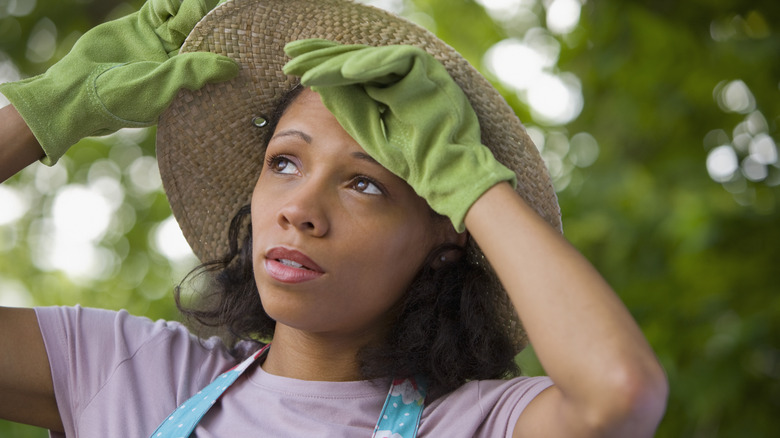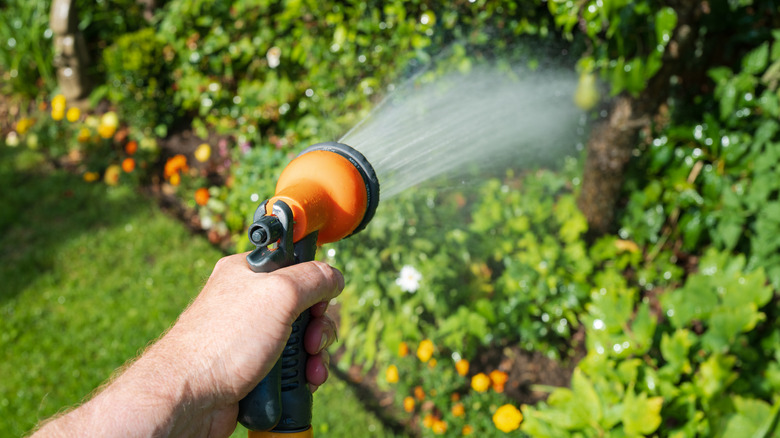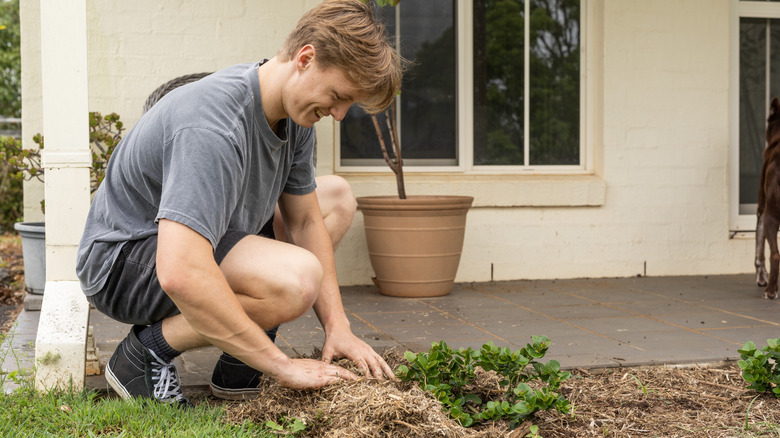Gardening Tasks You Shouldn't Do If A Heatwave Is Coming
When temperatures start to pick up and the time between rainy days starts to get longer, some gardeners might feel like they are racing against time to do their best to save their plants from the heat. While keeping up with proper plant care is something to be applauded, certain tasks can backfire on you when battling a heatwave. Some good gardening tasks like watering, fertilizing, and pruning might be great for maintaining a healthy yard, but will only stress your plants out even more if done incorrectly while they are already taking strain under the scorching temperatures.
You want to avoid these gardening mistakes when it's super hot out and instead focus on protecting your garden from the harsh temperatures. Heatwaves mean your plants are facing long, hot days where managing sun exposure, moisture, and soil temperatures are of the utmost importance. You want to ensure you are bolstering your plants' strength to fight the impending heat waves.
Gardening tasks that do more harm than good in a heatwave
It's important to know when and how to water your plants. During a heatwave, the best time to water your garden is early in the morning, before the sun comes up. This will give your soil enough time to soak up that much needed moisture to sustain your plants throughout the day and reduce the amount of moisture lost to evaporation. Another great watering technique to use in your garden is to water your plants directly towards the soil, aiming at the root zone. You could also consider a drip irrigation system that would keep your soil well hydrated. During a heatwave, regulated and deep watering is preferred over shallow and frequent watering as the latter will draw your plants' roots closer to the surface where they'll be vulnerable to heat and diseases.
Your garden already struggles to retain moisture during a heatwave, so you want it to use the moisture it does have to sustain itself. That also means avoiding gardening activities like pruning and fertilizing that will channel your garden's resources towards new growth. It's understandable to worry about your plants absorbing enough nutrients, but overcompensating for that will only stress them out. Fertilizing and pruning encourages new growth that puts further strain on the roots that will need to work overtime to maintain the growing plants. The new growth also won't be able to withstand the harsh sun, which can trigger scorching.
Gardening tasks you want to focus on instead
Now that you've established what not to do to your plants during a heatwave, there are some things you can do to protect them from the harsh conditions. You can do this by mulching around your plants, which will help reduce the amount of moisture lost to evaporation, keep the soil around your plants cooler during the day, and it can also keep weed seeds and pests at bay. Mulch will act like a cooling blanket of protection for your plants and their soil.
You can add an additional layer of protection by providing shade for your plants to keep them cool, either in the form of netting or mesh covering the garden area or by using large beach umbrellas. It's worth noting though, that gardeners need to consider air circulation around their plants when providing shade. Shading material should be light and breathable, and it must be propped up in such a way that it doesn't trap hot air beneath the covers. All in all, you want to be in tune with your garden's needs by keeping a close eye on it and watching out for signs of heat stress such as leaf scorching and wilting.


